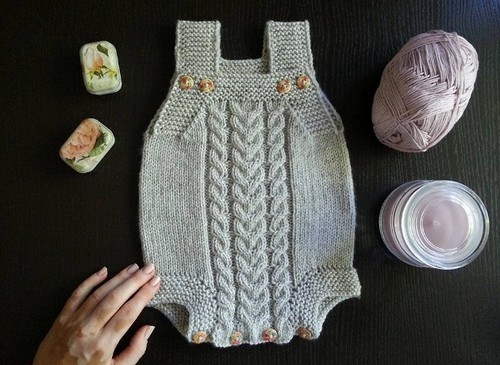A woman who is preparing to become a mother is interested in everything related to the birth of a child. Is it possible to prepare for childbirth, how long it will last, is it really so painful?
How not to miss the time when it is time to go to the hospital? Does the process of giving birth to a first-born child differ from how the second birth takes place? Let’s look for answers together.
The unknown is frightening, therefore, the more a woman knows about the process of the baby being born, the calmer and more confident she feels. After all, the inept actions of the expectant mother, severe unrest or loss of control over herself during labor can have adverse consequences for her own health and, especially, the health of the baby. The correct behavior of a woman at the birth of a child is very important.
Childbirth is a variable process that occurs in every expectant mother in different ways. Nevertheless, events develop according to one scenario.
Prenatal period
Many pregnant women feel prenatal delivery in advance. After 38 weeks, the so-called prenatal period begins. At this time, the expectant mother can feel the fetus move lower, feel a slight pulling pain in the lower back, and get acquainted with the first irregular contractions. So the female body prepares for childbirth. It happens that false contractions make the pregnant woman, especially the one expecting her first child, worry, because they can seem very noticeable.
But do not immediately go to the hospital, it is better to observe: irregular contractions have their own characteristics. If the contractions in the abdomen after a while do not become more intense and frequent, then they are false. Often the condition of a pregnant woman experiencing false contractions improves after a change in body position.

How to recognize regular contractions?
These contractions indicate the onset of labor. Contrary to the fears of pregnant women, it is almost impossible to miss or oversleep. These contractions will not disappear when you change your body position or after rest. On the contrary, over time they will become stronger and more frequent. How to determine when it is time to travel to the hospital? It is necessary to calculate and record the duration of contractions and the time periods between them. If the breaks are approximately 5 minutes, you can go to the hospital and prepare for an early meeting with the baby.
First stage of labor: contractions and disclosure
So, the first stage of labor begins with regular contractions, leading to the opening of the uterus or with the outflow of amniotic fluid. If the waters have departed, you must go to the hospital immediately, without waiting for regular contractions. A long waterless period can harm the baby. In addition, the expectant mother should pay attention to the color of the amniotic fluid (they can be transparent or colored in green) and the lack of smell and tell this information to the obstetrician.
Contractions can last several hours. Causing only tension of the abdomen at the beginning, by the time the uterus opens, they can become really painful. But even at this time, a woman should not be afraid and lose control of herself. Childbirth is a natural process and the body does its job. Contractions can affect the expectant mother in different ways, causing not only pain, but also dizziness, nausea, and weakness. At these moments, you can imagine a baby for whom each new fight is a small step towards birth. Remember, even if the pain is severe, in the periods between contractions you need to try to relax, rest and do not forget about proper breathing.
Oxygen is necessary not only for the child, but also for the expectant mother. A woman should not hold her breath during contractions – this will not eliminate unpleasant sensations. When pain begins to come, it is especially important to try to take full breaths and exhalations. And even more so, do not shout. It has been proven that rhythmic breathing during contractions helps to ease pain. And some women are helped by singing.
The second effective method to relieve pain is a massage of the sacral spine. Light stroking of this area or strong pressing will force the pulling sensations arising from the lower back to slightly recede. By the way, dads who are waiting for the baby to appear next to the expectant mother are perfectly able to cope with such a massage.
Disclosure is faster, and contractions are a little easier when the woman is not lying, but walking or standing. But here she needs to listen to her health and move only if she really wants to.
At some point, the woman feels an irresistible urge to push – this is a signal that the cervix has opened almost or completely and the baby will be born soon. With the occurrence of attempts, a woman in labor is transferred to the obstetric bed.
Childbirth on the obstetric bed is convenient for the doctor. A good overview of what is happening allows him to act on the situation and make the necessary decisions in time. Therefore, the vast majority of births in our time are carried out precisely on the obstetric bed.
The second option is delivery in a squatting position or on your knees, when a woman rests her hands on the headboard. In this case, gravity helps the mother and child. Vertical childbirth is considered more physiological, but at the slightest sign of complications, the woman is still placed on the obstetric bed.
Second period: the process of expulsion of the fetus
The expulsion of the fetus may seem almost painless in comparison with contractions, but it may be vice versa – everything is individual. The main rule is that a woman in labor must actively participate in the process: listen carefully to the doctor, breathe and push properly.

Despite the fact that attempts arise reflexively, a woman can and should control the process of expulsion of the fetus. To avoid ruptures and birth injuries of the fetus, the obstetrician’s instructions must be followed exactly! Frequent shallow breathing (on the principle of “doggy”) helps to restrain the effort, properly and strongly pushing (“in the stomach”) means acting in the same way as with the urge to defecate well-known to every person.
The moment of teething may seem the most difficult and unpleasant. But a woman needs to help her child be born. When the head was born, the baby appears very quickly.
The second period of childbirth can last up to an hour, but much more often the baby is born in 20-30 minutes – it all depends on the efforts of the woman in labor.
Having been born, the child begins to breathe, emits the first cry. If his condition does not cause a doctor’s concern, the baby is placed on the mother’s stomach and after a while the umbilical cord is cut. This moment can be considered the end of the active part of childbirth, although there is still an important third period.
The third period: postpartum, during which the placenta is born.
The postpartum period usually does not take more than half an hour. The uterus continues to contract, and the placenta is born painlessly.
If the placenta does not separate, the doctor can carefully separate it manually or administer to the woman a drug that enhances uterine contractions.
A born placenta is carefully examined to check its integrity. It is imperative that no uterine particles remain in the uterus – this can lead to inflammation of the uterine mucosa or internal bleeding.
The doctor carefully examines the young mother: checks for bleeding, tears, treats with a disinfectant solution. If damage occurs during labor, suturing is done under local anesthesia. This procedure does not cause discomfort in a woman.
Usually the first birth lasts from 12 to 18 hours, the second faster – from 8 to 12 hours. They say about prolonged labor if the time of birth of the child exceeds these indicators.
What to do to make delivery easy?
The expectation of childbirth, especially the first, for obvious reasons, causes the expectant mother to worry. How to reduce the feeling of excitement? First of all, to realize that childbirth is a natural test for the body, with which it will cope. If something goes wrong – the medical staff of the hospital will help. Therefore, nothing irreparable during childbirth is likely to happen.
If the expectant mother regularly visits the obstetrician-gynecologist, complies with all medical prescriptions, leads a healthy lifestyle – that means she does everything necessary for herself and the baby.
Specialty courses for expectant mothers help many pregnant women overcome uncertainty. At such classes, they talk about childbirth, the features of caring for a baby, and learn the breathing technique during contractions and attempts. Often, young mothers, having met on courses, continue to communicate after the birth of babies.
A woman needs to choose a suitable maternity hospital and, if possible, a doctor in advance. It is better to take advantage of reviews of familiar young parents. It can be useful to come to the maternity hospital you like in advance and look around. In extreme cases, you can look at the forums for moms, sometimes there are also useful reviews.
Some women, expecting a baby, begin to read a lot about pregnancy and childbirth. Knowledge, in this case, is good in moderation. Try to avoid negative information! It is enough to understand in general terms what is happening with the body of the mother and child. This knowledge is usually enough to find peace of mind and not doubt that 9 months will pass perfectly, childbirth will be easy and a healthy baby will be born!



